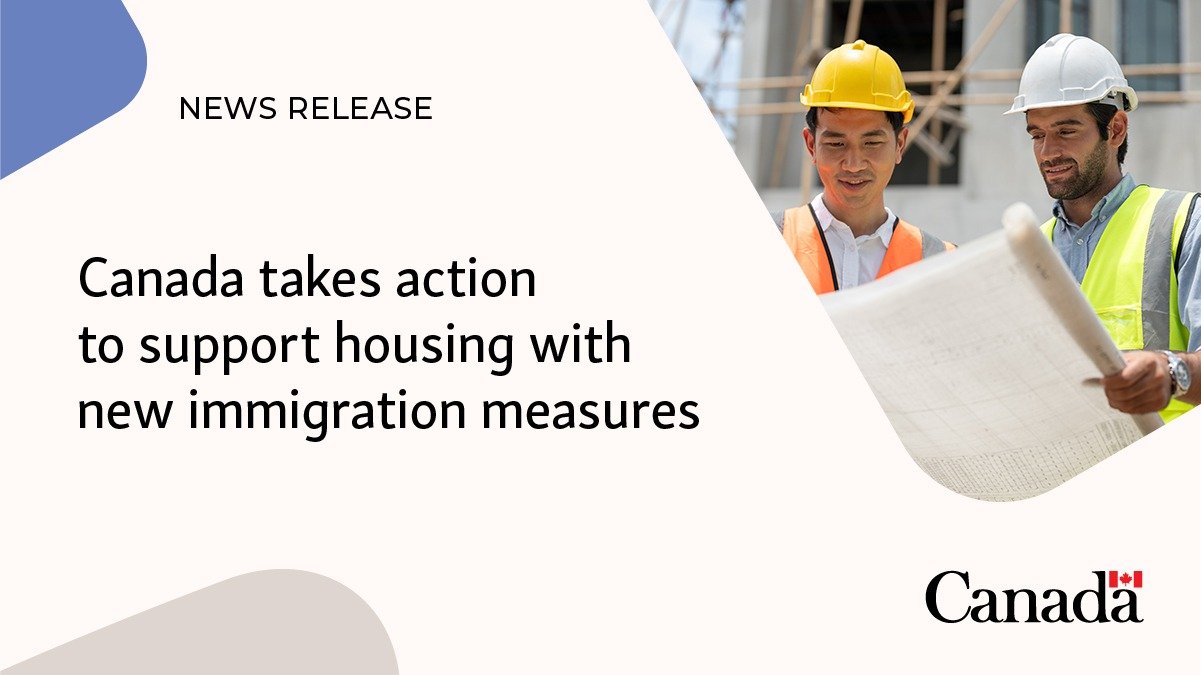
Canada is facing a housing crisis, and the government is stepping up with bold, innovative immigration measures to address it. On March 7, 2025, Immigration, Refugees and Citizenship Canada (IRCC) announced a series of initiatives aimed at bolstering the construction industry to meet the nation’s growing housing demands. These measures, part of the 2025–2027 Immigration Levels Plan, are designed to bring skilled workers into the fold, regularize undocumented construction workers, and support foreign apprentices. Let’s dive into what these changes mean, why they matter, and how they could shape Canada’s future.
Why Immigration is Key to Solving Canada’s Housing Crisis
Canada’s housing shortage is no secret. With skyrocketing demand for affordable homes and infrastructure, the construction sector is under immense pressure to deliver. According to recent data from the Canadian Home Builders’ Association, Canada needs to build approximately 3.5 million new homes by 2030 to close the housing gap. However, a critical shortage of skilled labor—carpenters, electricians, plumbers, and more—has slowed progress. Immigrants have long been a cornerstone of Canada’s workforce, and the construction industry is no exception. In 2024, immigrants made up over 25% of the construction workforce in major urban centers like Toronto and Vancouver, according to Statistics Canada. The new measures announced by IRCC aim to harness this potential further, ensuring that Canada’s housing goals are met while maintaining sustainable immigration levels.
Breaking Down the New Immigration Measures
The IRCC’s announcement, led by the Honourable Marc Miller, Minister of Immigration, Refugees and Citizenship, outlines three key initiatives to support the construction sector. These measures are timely, targeted, and poised to make a significant impact. 1. Tripartite Advisory Council for Long-Term SolutionsTo address the construction industry’s labor needs, Canada is launching a tripartite advisory council composed of federal government officials, union representatives, and industry leaders. This council will:
- Assess labor shortages: Identify specific skill gaps in the construction sector, from bricklayers to project managers.
- Advise on immigration pathways: Develop tailored programs to attract and retain skilled workers, ensuring long-term stability.
- Protect workers: Set robust safeguards against exploitation, including a strong wage threshold to ensure fair pay.
This collaborative approach is a smart move. By bringing together stakeholders, the council ensures that policies are grounded in real-world needs rather than bureaucratic assumptions. Expect updates from the council in the coming months as they shape these pathways.
2. Regularization Pathway for Out-of-Status Construction Workers
One of the most groundbreaking measures is the creation of a regularization pathway for undocumented construction workers. This initiative builds on the success of a pilot program in the Greater Toronto Area (GTA), where undocumented workers have already proven their value to the industry.
- Who benefits? Undocumented migrants currently working in construction will have a chance to gain legal status, allowing them to continue contributing to Canada’s housing boom.
- Why it matters: These workers are already embedded in communities, filling critical roles. Regularizing their status ensures they can work safely, access fair wages, and contribute to the economy without fear of deportation.
- Economic impact: By keeping skilled workers in Canada, this pathway could help address the labor shortage of over 80,000 workers projected by BuildForce Canada for 2025.
This measure is a win-win: it supports workers’ rights while addressing the housing crisis head-on. More details on eligibility and application processes will be released as the advisory council finalizes its recommendations. 3. Support for Foreign ApprenticesTo fast-track the development of skilled tradespeople, Canada is introducing a temporary measure that allows foreign apprentices in construction programs to study without a study permit. Effective immediately as of March 7, 2025, this change removes a significant administrative barrier, enabling apprentices to:
- Complete their training faster.
- Gain hands-on experience in high-demand trades like welding, carpentry, and masonry.
- Contribute to infrastructure projects sooner.
This move is particularly timely given the aging workforce in construction. According to BuildForce Canada, nearly 20% of the construction workforce is expected to retire by 2030, creating an urgent need for new talent. By supporting foreign apprentices, Canada is investing in the next generation of builders.
Why These Measures Matter Now
The timing of these announcements couldn’t be more critical. Canada is grappling with a housing shortage, rising inflation, and potential economic disruptions from tariff threats (as noted in the IRCC release). The construction industry is a linchpin for economic stability, contributing 7% to Canada’s GDP and employing over 1.5 million people, according to Statistics Canada. Moreover, these measures align with Canada’s broader immigration strategy. The 2025–2027 Immigration Levels Plan emphasizes sustainable immigration, balancing economic needs with community integration. By focusing on construction, the government is addressing a pressing national priority while reinforcing Canada’s reputation as a welcoming destination for skilled workers.
What’s Next for Canada’s Construction Sector?
The IRCC’s initiatives are a promising start, but their success will depend on execution. Here’s what to watch for in the coming months:
- Advisory Council Updates: The tripartite council’s recommendations will shape the specifics of new immigration pathways. Expect announcements on eligibility criteria, application processes, and timelines by mid-2025.
- Impact on Housing Targets: With a stronger construction workforce, Canada could accelerate progress toward its 3.5 million homes by 2030 goal. However, challenges like supply chain disruptions and rising material costs will need to be addressed in parallel.
- Worker Protections: The emphasis on “robust protections” and fair wages is encouraging, but the government must ensure that employers adhere to these standards to prevent exploitation.
How These Changes Benefit Canadians and Newcomers Alike
These immigration measures aren’t just about building houses—they’re about building communities. For Canadians, they promise more homes, stronger infrastructure, and a more resilient economy. For newcomers, they offer opportunities to contribute meaningfully while gaining stability and fair treatment.
- For Canadians: More skilled workers mean faster construction of affordable housing, schools, and hospitals, easing the strain of the housing crisis.
- For immigrants: Regularization and apprenticeship support provide pathways to legal status, career growth, and integration into Canadian society.
- For the economy: A stronger construction sector boosts GDP, creates jobs, and supports related industries like manufacturing and real estate.
A Witty Take: Building Homes, One Brick (and Visa) at a Time
Let’s face it: Canada’s housing market has been playing hard-to-get for years. With these new immigration measures, the government is essentially saying, “We’re done with the waiting game—let’s build some homes!” By welcoming skilled workers, legalizing undocumented talent, and training the next generation, Canada is laying the foundation (pun intended) for a brighter future. So, grab your hard hat, because the construction boom is about to get a serious immigration-powered upgrade!
Conclusion: A Step Toward a Stronger Canada
Canada’s new immigration measures are a bold, forward-thinking response to the housing crisis. By leveraging the skills of immigrants, regularizing undocumented workers, and supporting apprentices, the government is addressing immediate labor shortages while building a sustainable future. These initiatives reflect Canada’s commitment to economic growth, worker protections, and inclusive immigration policies. As the tripartite advisory council begins its work and new pathways take shape, Canadians and newcomers alike can look forward to a more robust construction sector—and, hopefully, a home to call their own. Stay tuned for updates, and let’s keep the conversation going on X or in the comments below! What do you think of these new measures? Are you in the construction industry or an immigrant hoping to benefit? Share your thoughts!
